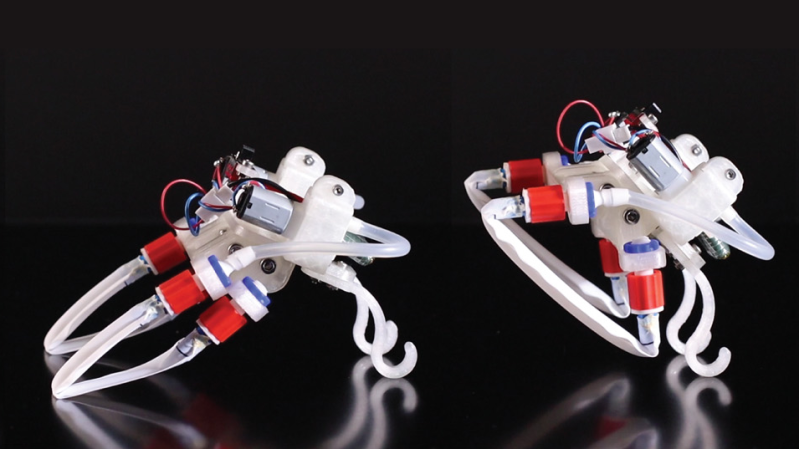Hackaday Links: June 8, 2025

When purchasing high-end gear, it’s not uncommon for manufacturers to include a little swag in the box. It makes the customer feel a bit better about the amount of money that just left their wallet, and it’s a great way for the manufacturer to build some brand loyalty and perhaps even get their logo out into the public. What’s not expected, though, is for the swag to be the only thing in the box. That’s what a Redditor reported after a recent purchase of an Nvidia GeForce RTX 5090, a GPU that lists for $1,999 but is so in-demand that it’s unobtainium at anything south of $2,600. When the factory-sealed box was opened, the Redditor found it stuffed with two cheap backpacks instead of the card. To add insult to injury, the bags didn’t even sport an Nvidia logo.
The purchase was made at a Micro Center in Santa Clara, California, and an investigation by the store revealed 31 other cards had been similarly tampered with, although no word on what they contained in lieu of the intended hardware. The fact that the boxes were apparently sealed at the factory with authentic anti-tamper tape seems to suggest the substitutions happened very high in the supply chain, possibly even at the end of the assembly line. It’s a little hard to imagine how a factory worker was able to smuggle 32 high-end graphics cards out of the building, so maybe the crime occurred lower down in the supply chain by someone with access to factory seals. Either way, the thief or thieves ended up with almost $100,000 worth of hardware, and with that kind of incentive, this kind of thing will likely happen again. Keep your wits about you when you make a purchase like this.
Good news, everyone — it seems the Milky Way galaxy isn’t necessarily going to collide with the Andromeda galaxy after all. That the two galactic neighbors would one day merge into a single chaotic gemisch of stars was once taken as canon, but new data from Hubble and Gaia reduce the odds of a collision to fifty-fifty over the next ten billion years. What changed? Apparently, it has to do with some of our other neighbors in this little corner of the universe, like the Large Magellanic Cloud and the M33 satellite galaxy. It seems that early calculations didn’t take the mass of these objects into account, so when you add them into the equation, it’s a toss-up as to what’s going to happen. Not that it’s going to matter much to Earth, which by then will be just a tiny blob of plasma orbiting within old Sol, hideously bloated to red giant status and well on its way to retirement as a white dwarf. So there’s that.
A few weeks ago, we mentioned an epic humanoid robot freakout that was making the rounds on social media. The bot, a Unitree H1, started flailing its arms uncontrollably while hanging from a test stand, seriously endangering the engineers nearby. The line of the meltdown was that this was some sort of AI tantrum, and that the robot was simply lashing out at the injustices its creators no doubt inflicted upon it. Unsurprisingly, that’s not even close to what happened, and the root cause has a much simpler engineering explanation. According to unnamed robotics experts, the problem stemmed from the tether used to suspend the robot from the test frame. The robot’s sensor mistook the force of the tether as constant acceleration in the -Z axis. In other words, the robot thought it was falling, which caused its balance algorithms to try to compensate by moving its arms and legs, which caused more force on the tether. That led to a positive feedback loop and the freakout we witnessed. It seems plausible, and it’s certainly a simpler explanation than a sudden emergent AI attitude problem.
Speaking of robots, if you’ve got a spare $50 burning a hole in your pocket, there are probably worse ways to spend it than on this inexplicable robot dog from Temu. Clearly based on a famous and much more expensive robot dog, Temu’s “FIRES BULLETS PET,” as the label on the box calls it, does a lot of things its big brother can’t do out of the box. It has a turret on its back that’s supposed to launch “water pellets” across the room, but does little more than weakly extrude water-soaked gel capsules. It’s also got a dance mode with moves that look like what a dog does when it has an unreachable itch, plus a disappointing “urinate” mode, which given the water-pellets thing would seem to have potential; alas, the dog just lifts a leg and plays recorded sounds of tinkling. Honestly, Reeves did it better, but for fifty bucks, what can you expect?
And finally, we stumbled across this fantastic primer on advanced semiconductor packaging. It covers the entire history of chip packaging, starting with the venerable DIP and going right through the mind-blowing complexity of hybrid bonding processes like die-to-wafer and wafer-to-wafer. Some methods are capable of 10 million interconnections per square millimeter; let that one sink in a bit. We found this article in this week’s The Analog newsletter, which we’ve said before is a must-subscribe.



